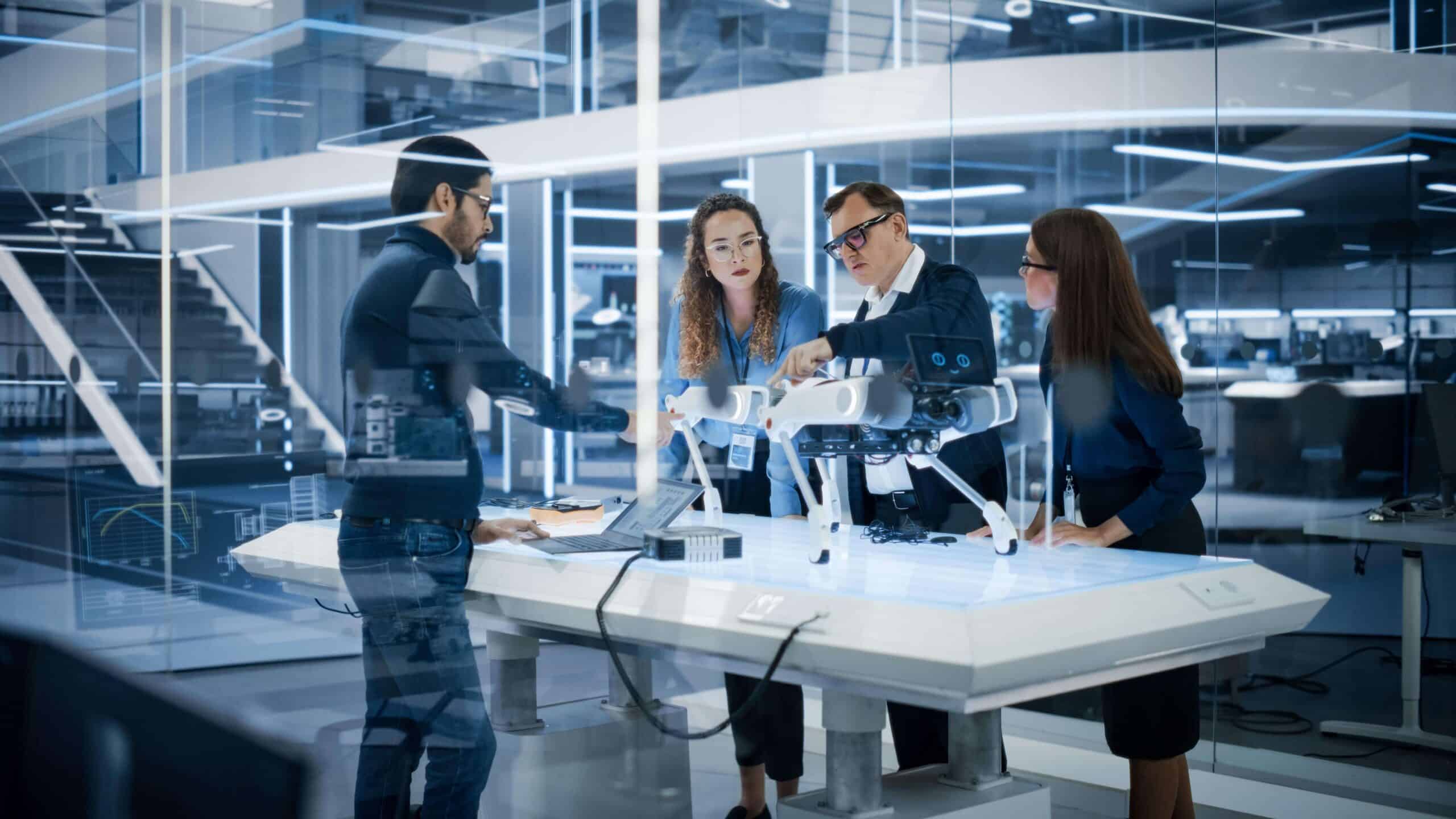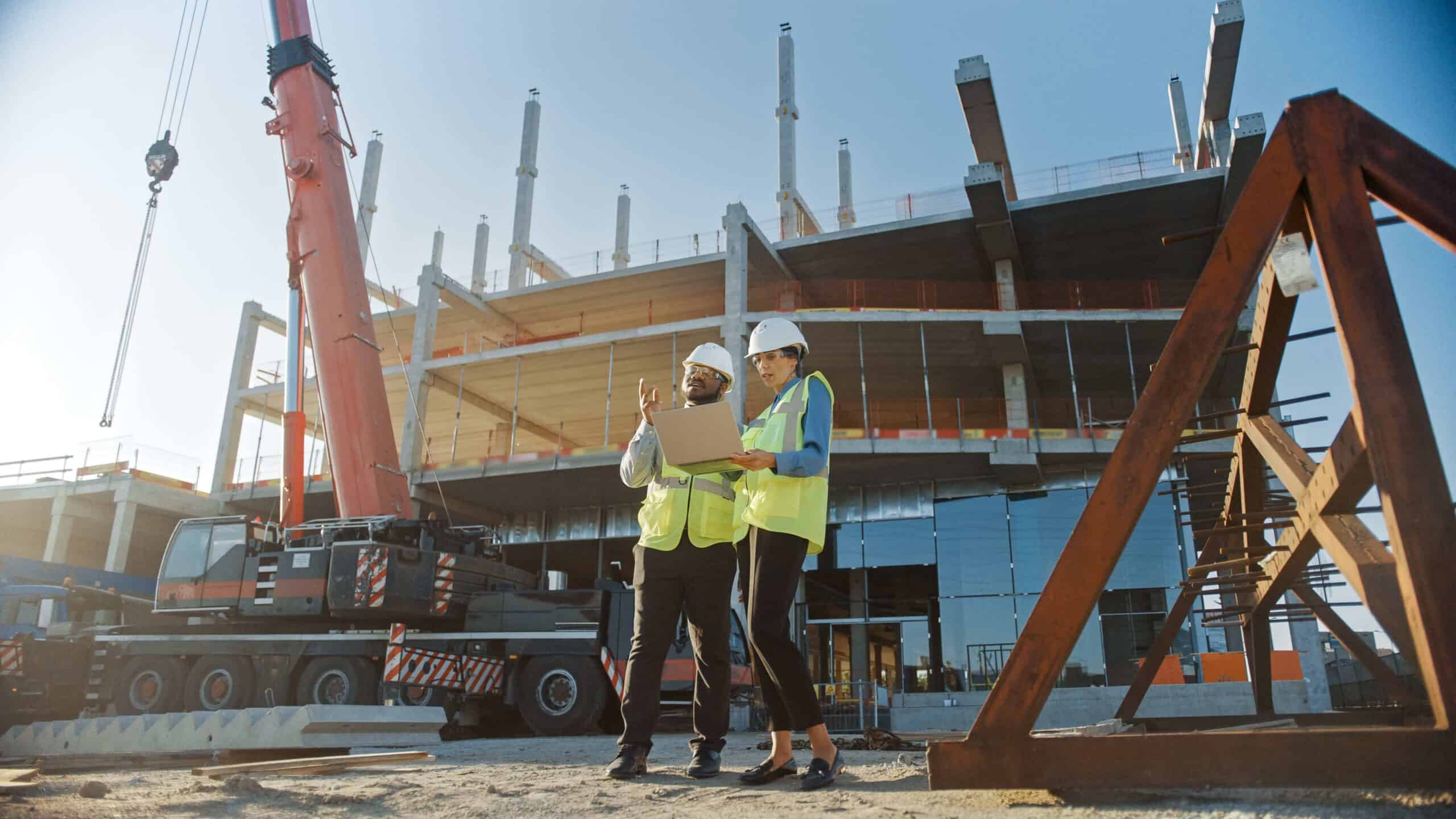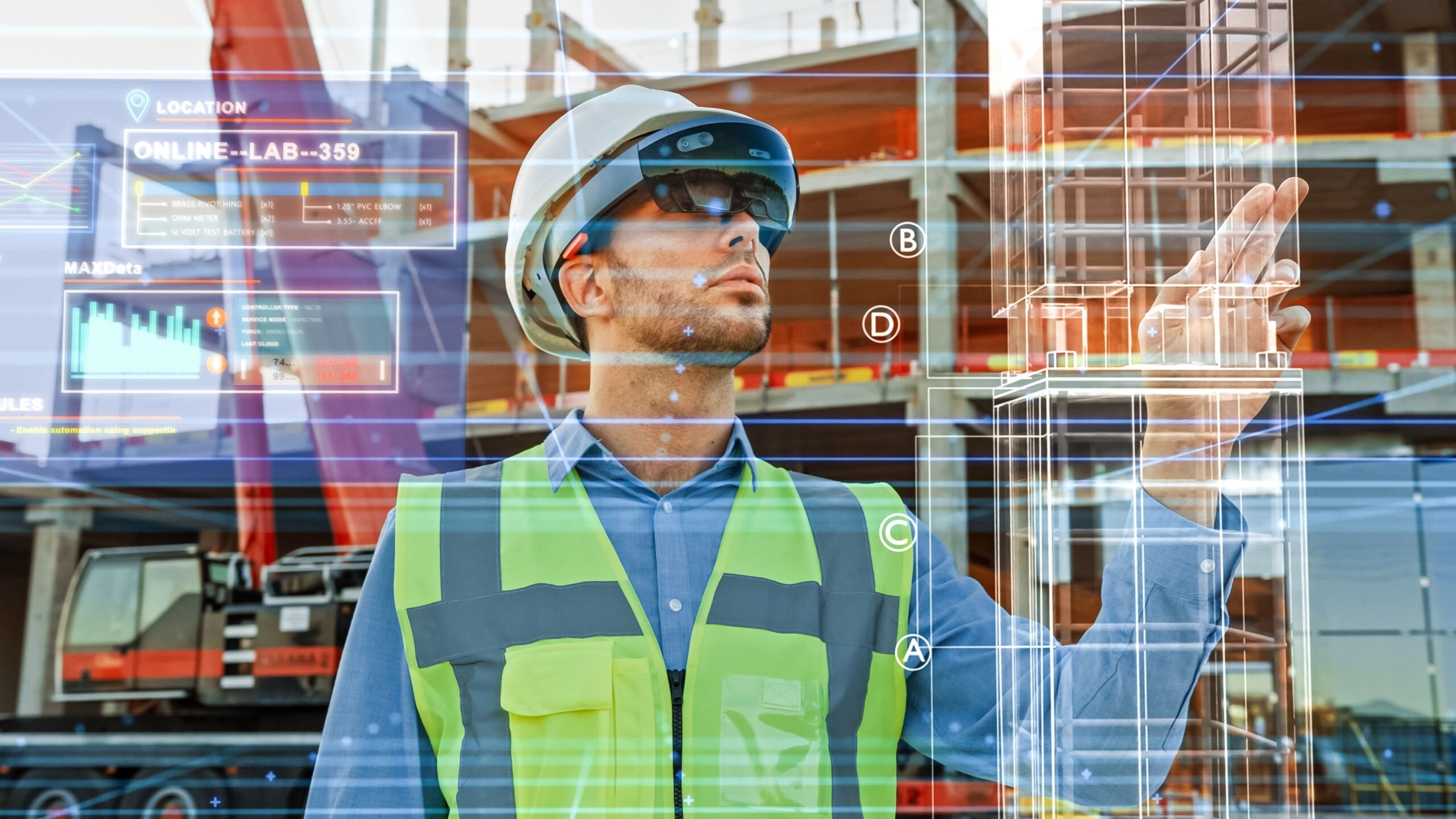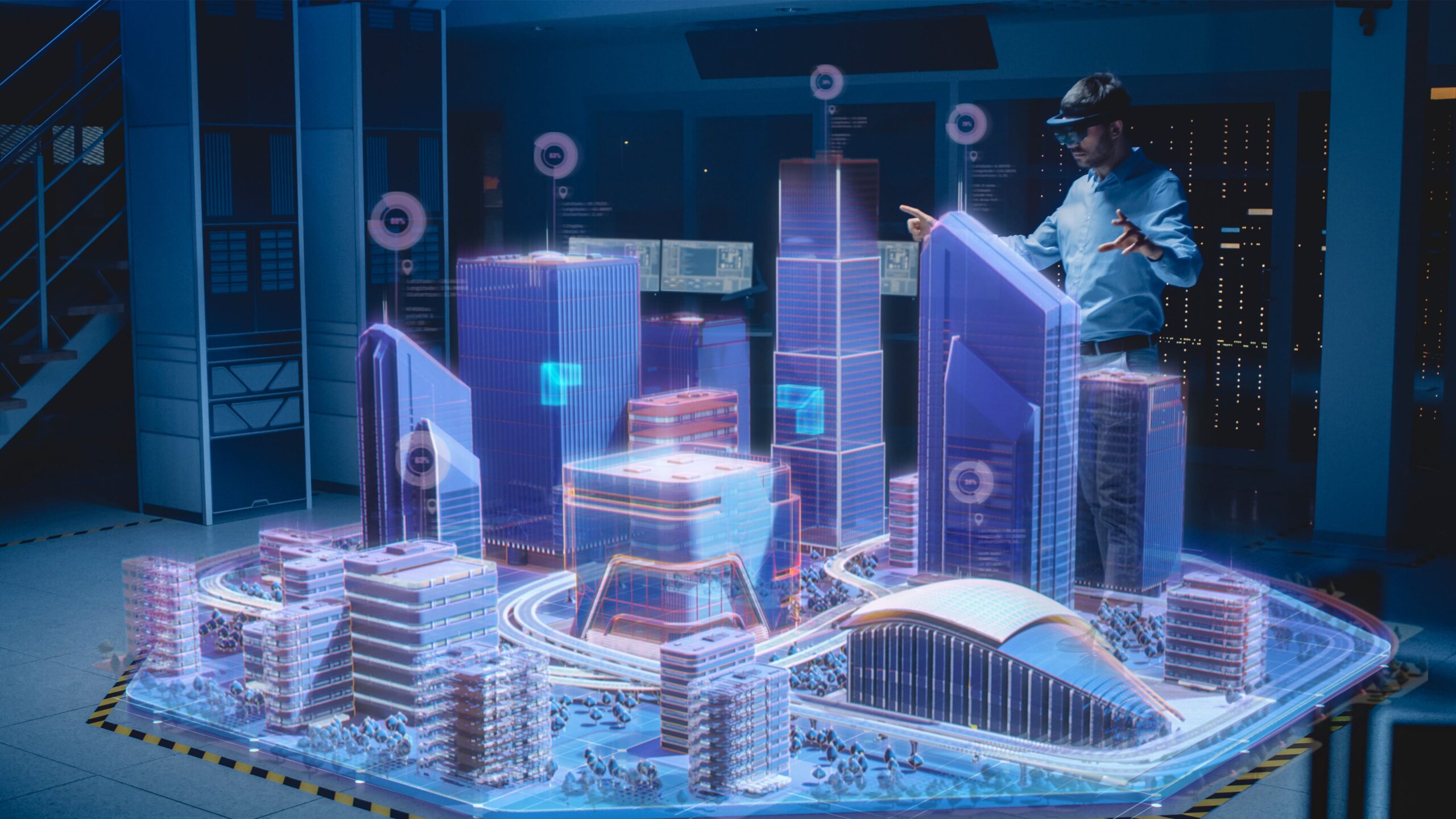- Quadruped robot ANYmal operates autonomously
- Could cyborg cockroaches be the future of search and rescue missions?
- Robotic bird of prey helps optimise airport safety and beyond
- Swarm robots autonomously build underground tunnel
- Snake robot optimises underground infrastructure inspection
In the near future, a visit to a construction or inspection site might feel like stepping into a high-tech zoo. Instead of the usual cast of human workers and heavy machinery, you may encounter a menagerie of robotic animals, each designed to tackle specific tasks with unparalleled efficiency and precision. These innovative creatures are set to change many industries, such as the construction sector but also inspection and maintenance — even search and rescue — bringing a new level of speed, safety, and productivity to projects of all sizes. Advances in robotics and artificial intelligence are enabling the development of specialised robots that mimic the abilities of their biological counterparts. What sets these robotic animals apart from traditional robots is their ability to navigate complex environments and adapt to changing conditions.
These agile and versatile machines can access places that would be dangerous or impossible for human workers, reducing the risk of accidents and injuries. Moreover, robotic animals are mostly designed to work alongside their human counterparts, not fully replace them. By taking on repetitive and labour-intensive tasks, these robots free up human workers to focus on more complex and creative aspects of projects. This collaborative approach not only boosts productivity but also helps to address the growing labour shortage in various sectors. As the technology behind robotic animals continues to evolve, the possibilities for their application are virtually limitless. So, the next time you visit a construction or inspection site, or perhaps a production plant, don’t be surprised if you find a labour force consisting of humans as well as ‘animal robots’. In this article, we will showcase some of the most exciting recent developments in this field.
Quadruped robot ANYmal operates autonomously
Picture a scenario where robots, instead of humans, venture into hazardous environments to carry out essential tasks. Meet ANYmal, a four-legged robot created by researchers at ETH Zurich University in Switzerland. This robot possesses an impressive degree of autonomy and versatility, making it an invaluable asset in a wide range of applications. What distinguishes ANYmal from other robots is its capability to navigate through intricate, real-world environments. While most machines learn to walk in controlled settings, ANYmal has been trained to confront obstacles and challenges that it might encounter in the field. As Fabian Jenelten, a professor of robotics at ETH Zurich and lead author of the study, explains: “We recreated challenging environments similar to those at natural disaster sites, where debris could crumble when stepped on, and at construction sites with oily and slippery surfaces”. From scaling stairs and traversing narrow beams to navigating rough and slippery surfaces, this robot has demonstrated its prowess in specially designed terrains spanning over 76,000 square metres.
One of the standout features of ANYmal is its ability to operate autonomously, making decisions and adapting to its surroundings without constant human intervention. Equipped with an array of cameras, sensors, gyroscopes, and Lidar (light detection and ranging sensors), the robot can perceive its environment, measure distances, create maps, and even detect gas leaks. This level of autonomy is paramount in industries where human safety is a top priority, such as construction sites or disaster zones. To attain this remarkable level of performance, ANYmal’s creators combined traditional methods for precise movements with deep learning techniques for handling diverse terrains. Jenelten’s team tackled the trade-off between versatility and accuracy by combining the precision of traditional methods with the versatility offered by deep learning. This approach has allowed the robot to achieve proprioception — the sense that enables humans and animals to perceive the location, movement, and action of their body parts. Consequently, ANYmal can navigate through complex environments with unparalleled accuracy and versatility. With its impressive capabilities and adaptability, ANYmal is a shining example of how robotics can vastly improve operations in various sectors, ushering in a new era of efficiency, safety, and productivity.
Could cyborg cockroaches be the future of search and rescue missions?
In the aftermath of natural disasters, time is of the essence when it comes to locating and rescuing survivors trapped beneath rubble. Enter the cyborg cockroach — a potential game-changer in search and rescue missions. Developed by Hirotaka Sato, an engineer at Nanyang Technological University in Singapore, these biohybrid robots combine the natural abilities of the Madagascar hissing cockroach with cutting-edge technology. While primarily designed for search and rescue, these innovative creatures may also find applications in various other industries, such as construction, inspection, or maintenance. Sato’s inspiration for this project stemmed from the devastating 2011 earthquake in Japan, which claimed over 18,000 lives. He envisioned a swarm of cyborg insects, equipped with sensors and transmitters, navigating through debris to locate survivors. As Sato explains, “We use the insect’s natural behaviour to induce a turn”, by stimulating touch receptors or muscles on either side of the cockroach’s body. This allows for remote control by human operators or autonomous navigation using on-board computers and infrared cameras.
While small, fully synthetic robots are also being developed for similar purposes, cyborg insects have a significant advantage in terms of operating time. As Sato points out, artificial robots can move only for a few minutes due to the limitations of small batteries powering both locomotion and payload devices. In contrast, cyborg cockroaches power their own movement through eating and drinking, allowing the small on-board batteries to focus solely on vision, communication, and navigation systems. Beyond search and rescue missions, these cyborg cockroaches could potentially change many other industries as well. Imagine deploying swarms of these creatures to inspect hard-to-reach areas or monitor the structural integrity of buildings in real time. Their ability to navigate tight spaces and operate for extended periods could provide invaluable insights into the safety and efficiency of construction sites and other potentially dangerous areas.
“The way of reacting to the RobotFalcon is very similar to the real falcon. The birds don’t distinguish it from a real falcon, it seems”.
Professor Charlotte Hemelrijk, University of Groningen, the Netherlands
Robotic bird of prey helps optimise airport safety and beyond
In the world of aviation, bird strikes pose a significant threat to aircraft, costing the industry billions and claiming the lives of countless birds each year. However, a groundbreaking innovation in the form of a robotic peregrine falcon, aptly named RobotFalcon, is set to change the game in bird deterrence at airports and beyond. Developed by a team of researchers at the University of Groningen in the Netherlands, RobotFalcon is a masterful imitation of its real-life counterpart. With a fibreglass and carbon-fibre body painted to mimic the markings of a peregrine falcon, this robotic bird of prey is designed to chase away flocks from airport flight paths. Powered by two small battery-powered propellers on its wings, RobotFalcon can reach speeds of up to 48 kilometres per hour and remain airborne for 15 minutes at a time, all while being controlled remotely by a human operator.
Field tests conducted by the researchers have shown that RobotFalcon is more effective at clearing fields of birds and keeping them away for longer periods compared to conventional deterrence methods, such as pyrotechnics and distress calls. Remarkably, the birds exhibited behaviour patterns associated with escaping from predators more frequently when confronted with RobotFalcon than with a conventional drone. As Professor Charlotte Hemelrijk from the University of Groningen notes, “The way of reacting to the RobotFalcon is very similar to the real falcon. The birds don’t distinguish it from a real falcon, it seems”.
While the primary focus of RobotFalcon is to enhance airport safety, its potential applications extend far beyond the aviation industry. In sectors such as agriculture, construction, and even wildlife conservation, this innovative technology could be adapted to deter birds from crops, construction sites, or sensitive ecological areas. By preventing birds from interfering with critical infrastructure or ecosystems, RobotFalcon could help to minimise damage, reduce costs, and protect both human activities and wildlife populations. By drawing inspiration from the natural world and leveraging cutting-edge robotics, we can develop sustainable solutions that prioritise safety, efficiency, and ecological balance. With further refinement and adaptation, RobotFalcon and similar technologies could completely change not only airport safety but also a wide range of industries where the interaction between birds and human activities is a concern.
“Using swarm construction methods according to a digital twin of the tunnel, a fleet of ‘hyperBot’ robots enters the ground via an arch of HDPE pipes. Once inside, the robots 3D-print the tunnel shell by deploying construction material directly into the ground”.
HyperTunnel
Swarm robots autonomously build underground tunnel
Swarm robotics, a concept inspired by the collective behaviour of animals such as ants and bees, is set to transform the construction industry. This innovative approach involves a group of robots working together autonomously, communicating and coordinating their efforts to achieve a common goal. A recent breakthrough by the British company HyperTunnel, which unveiled the world’s first entirely robot-constructed tunnel, has sparked interest in the potential applications of this cutting-edge technology. The tunnel was built at the company’s R&D facility in the North Hampshire Downs in the United Kingdom. “Using swarm construction methods according to a digital twin of the tunnel, a fleet of ‘hyperBot’ robots enters the ground via an arch of HDPE pipes”, according to a HyperTunnel spokesperson. “Once inside, the robots 3D-print the tunnel shell by deploying construction material directly into the ground”.
The hyperTunnel project demonstrates the immense potential of swarm robotics in the construction sector, particularly in high-risk activities such as tunnel building. By incorporating swarm robotics, the need for human workers to enter hazardous situations is eliminated, thanks to the robots’ spatial organisation, navigation, and collective decision-making capabilities. Beyond tunnel construction, swarm robotics has the potential to significantly improve the creation of various structures that are conventionally difficult for humans to build. However, the widespread adoption of this technology also faces challenges, primarily due to the high cost of sensors, motors, and processing software. Additionally, the early stage of the technology means that reliable and secure communication within swarms remains an issue, which could lead to crashes and malfunctions if not addressed properly.
However, as the technology continues to evolve, it has the potential to transform the construction industry by enabling the creation of complex structures in a more efficient and cost-effective manner. The successful completion of the hyperTunnel demonstrates the feasibility of employing swarm robotics in real-world scenarios and is a testament to the ingenuity and dedication of the researchers and engineers working to push the boundaries of what is possible with swarm robotics, setting the stage for exciting future developments in this field.
Snake robot optimises underground infrastructure inspection
In a world where maintaining and inspecting underground infrastructure is often a daunting and disruptive task, a groundbreaking innovation is slithering its way to the forefront. Soryu-C, a snake robot designed by the Japanese company Hibot for inspecting hard-to-reach underground facilities, has recently been deployed by A2A, an Italian operator of heating district facilities, to inspect underground steam pipes in the northern city of Brescia, Italy. Soryu-C’s unique design allows it to navigate through narrow spaces and reach underground piping facilities that are otherwise difficult to access. Connected to a semi-automatic reel unit by a tether, the robot can be deployed through small access points, eliminating the need for extensive excavation work. Equipped with multiple cameras for navigation, inspection, and mapping, Soryu-C provides a comprehensive view of the underground infrastructure without causing any disturbance to street-level traffic.
The impact of this technology is significant, as traditional methods of inspecting underground pipes involve digging holes in streets and require weeks of work to complete the inspection, close the holes, and restore the pavement. With Soryu-C, A2A was able to access underground pipes from conventional manholes, saving time and money, and minimising inconvenience to the public. A2A, a company that generates, distributes, and markets various utility services in Italy and Greece, faces the challenge of maintaining a vast network of underground pipes in heating districts. These pipes are often enclosed in narrow spaces and span several kilometres beneath cities. The high costs and scheduling constraints associated with blocking street traffic and interrupting heating services have long hampered the maintenance of this critical infrastructure.
By embracing Soryu-C, A2A has not only improved the efficiency of underground heating infrastructure inspections but also contributed to the industry’s decarbonisation efforts. This innovative snake robot, with its flexible design, excels in inspecting buried or difficult-to-access infrastructures, making it a valuable tool in various other sectors as well. The potential applications of Soryu-C extend to industries such as construction, oil and gas, and telecommunications, where underground infrastructure plays a vital role. By adapting this technology to suit different contexts, companies can streamline their inspection processes, reduce costs, and minimise the environmental impact of their operations. As the world continues to grapple with the complexities of maintaining and upgrading ageing infrastructure, technologies like Soryu-C offer a glimpse into a future where inspection and maintenance processes are more efficient, less disruptive, and environmentally friendly.
In closing
As we have learned in this article, the advent of robotic animals is poised to reshape various industries, from construction and inspection to search and rescue operations and beyond. The innovative designs and advanced capabilities of these machines demonstrate the immense potential of bioinspired robotics in addressing complex challenges and improving efficiency, safety, and sustainability. Looking ahead, the continued development of robotic animals will likely focus on enhancing their autonomy, adaptability, and collaborative abilities. Researchers and engineers will work on refining the robots’ sensory systems, decision-making algorithms, and communication networks to enable seamless integration with human teams and other machines. As these technologies mature, we can expect to see an increasing number of robotic animals deployed in real-world settings, taking on tasks that were once considered too dangerous, difficult, or time-consuming for humans. Moreover, the adoption of robotic animals is expected to drive significant advancements in related fields, such as artificial intelligence, materials science, and energy storage. The development of more efficient and durable components, coupled with the integration of advanced AI systems, will further expand the capabilities and applications of these machines. The future of robotic animals is both exciting and challenging, but while these machines hold immense promise for improving our world, their development and deployment must be guided by a commitment to ethics, sustainability, and the wellbeing of both humans and the environment. By harnessing the power of bioinspired robotics responsibly and creatively, we can unlock new possibilities and build a better future for all.




